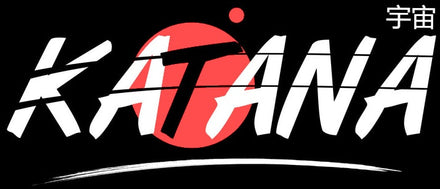The katana, an emblematic symbol of feudal Japan, is much more than just a weapon. It embodies both artistic elegance and formidable combat efficiency. For those interested in martial arts, history, or Japanese culture, the katana often sparks a particular fascination. In this comprehensive article, we will delve into the factors that influence the price of a katana and reveal the extremes of the market, presenting both the cheapest and the most expensive katana.
Factors Influencing the Price of a Katana

Forge Quality
Forge quality is one of the most important factors in evaluating a katana. Katana swords forged by renowned Japanese master craftsmen are often more expensive due to the reputation and expertise of the blacksmiths. These artisans follow traditional methods, use high-quality materials, and implement forging techniques passed down through generations. The forging of a katana is a complex process that requires time, patience, and considerable expertise. This combination of craftsmanship and superior materials contributes to increasing the final price of a katana.
Steel Type Used
The choice of steel is a crucial element in determining the price of a katana. Traditional steels used for forging katanas are prized for their specific composition and ability to produce sharp and durable blades. The most famous and sought-after steel is Tamahagane steel, a high-quality steel made from iron extracted from Japanese iron sand and charcoal. However, Tamahagane is rare and expensive, which is reflected in the price of a katana made with this material. Other high-quality steels such as manganese steel and T-10 carbon steel are also used for crafting katana blades, with price variations based on their availability and specific characteristics.
Blade Length and Curve
The length and curve of a katana blade are features that can vary from one sword to another. Longer blades, typically between 60 and 80 centimeters, are considered more prestigious and may, therefore, cost more. The curve of the blade, also known as sori, is another important aspect. A pronounced curve may be more challenging to achieve and can, therefore, increase the price of a katana.
Hamon Presence
The hamon is a distinct wavy line on the katana blade, created through differential hardening. The presence of a well-defined and aesthetically pleasing hamon can increase the value of a katana. Blades with elaborate hamon, showcasing the skill of the blacksmith, are often more desired by collectors and, consequently, more expensive.
Authenticity and History of the Katana
The authenticity and history of a katana can also influence its price. Antique katanas, which have survived through the ages, are often considered precious collectible pieces. Their value can increase based on their provenance, previous owners, or association with historical events.
The Cheapest Katana: Low-Quality Replicas

In the market, it is possible to find katanas at affordable prices. However, it is worth noting that these katanas are generally low-quality replicas and may cost between 50 and 150 euros. They are often made of stainless steel or cheap alloys. While they may have a similar appearance to an authentic katana, they lack the quality features that define traditional Japanese swords. These replicas are mainly intended for decorative purposes or basic use.
Minimum Price for Quality Katana
Beyond low-quality replicas, there is a range of high-quality katanas that fall above the lowest price range. These katanas (as found on our site), often crafted by artisans dedicated to quality and authenticity, offer an interesting alternative for those seeking a functional and aesthetically pleasing sword. While their price may exceed 200 euros, these katanas provide excellent value for those looking to own a quality sword without breaking the bank.
These mid-range katanas are often made from high-quality steel that offers better cutting performance and increased durability compared to cheap replicas. Artisans crafting these katanas focus on attention to detail, mastery of traditional forging and tempering techniques, as well as the creation of functional blades.
In addition, these mid-range katanas often feature characteristics such as a well-defined hamon and an authentic blade curve. They may also be equipped with tsukas (handles) and tsubas (guards) of higher quality, made from materials such as premium wood, copper, or iron. These aesthetic and functional details make these katanas an excellent choice for those seeking a balance between price and quality.
It is essential to note that even among mid-range katanas, there may be price variations based on the blacksmith's reputation, the rarity of materials used, as well as specific features and finishes.
The Most Expensive Katana: Unique Artworks

At the top of the katana market are unique and exceptional pieces of art. These katanas are created by renowned master blacksmiths and are often considered valuable investments. Their prices can reach considerable sums, sometimes in the tens or even hundreds of thousands of euros. These collector's swords stand out for their unmatched quality, history, rarity, and exquisite aesthetics. They are highly prized by collectors, martial arts enthusiasts, and connoisseurs.
Find a Katana That Matches Your Budget and Expectations
The price of a katana varies considerably depending on various factors, including forge quality, steel type, blade length and curve, hamon presence, as well as the authenticity and history of the sword. Low-quality replicas are the cheapest katanas available in the market, but they lack the features and authenticity of traditional katanas. On the other end, the most expensive katanas are unique works of art, created by renowned master blacksmiths, and are often considered valuable investments. In between these extremes, there is a variety of mid-range katanas that offer good value for money and are made with high-quality materials by artisans committed to authenticity and functionality.
Whether you are a martial arts enthusiast, a collector, or simply curious, it is essential to define your needs, budget, and preferences before embarking on the purchase of a katana. Conduct thorough research, consult experts, and make sure to choose a sword that matches your expectations in terms of quality, authenticity, and aesthetics.









